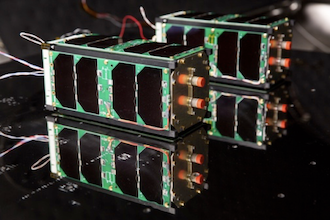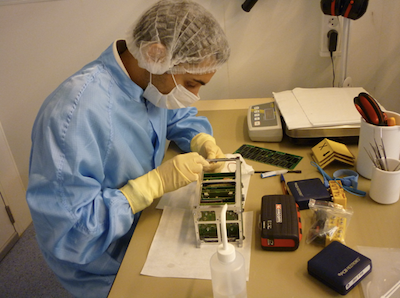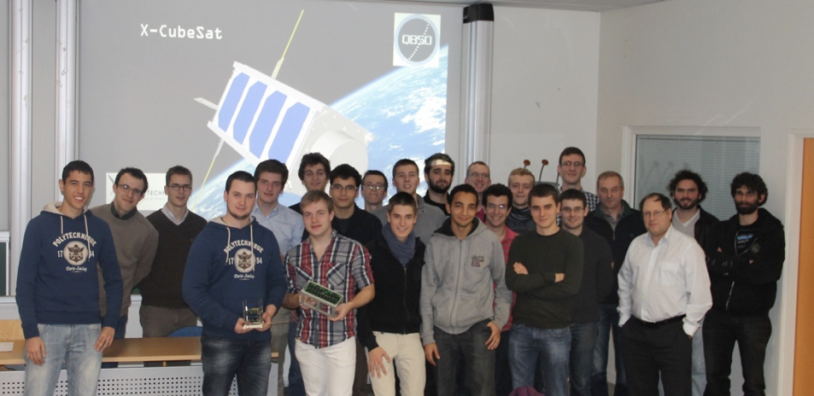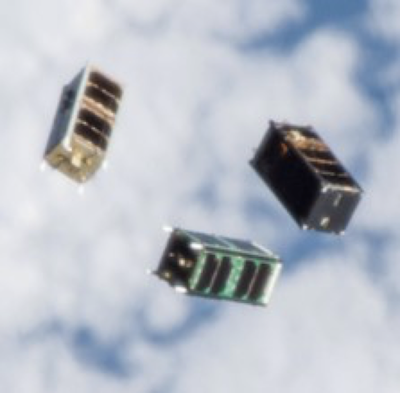XCubeSat / SpaceCube
 | |
| Partners | Ecole Polytechnique, Ecole des Mines ParisTech |
| Launch date and base | 18 April 2017 to the ISS from Cape Canaveral |
| Deployment | 17 and 18 May 2017 from the ISS |
| Orbit | 400 km |
| Mission lifetime |
|
XCubeSat and SpaceCube are two nanosatellites developed for the international QB50 project led by the Von Karman Institute for Fluid Dynamics (VKI) in Belgium. They both carried the FIPEX instrument (phi – Probe – Experiment) developed by the University of Dresden to measure oxygen density in low Earth orbit.
They were the first two French 2U cubesats (10 x10x 22.7 cm) to be orbited and were deployed from the International Space Station (ISS).

Ecole Polytechnique students who contributed to the XCubeSat project. Credits: Ecole Polytechnique
The two cubesats were developed in synergy by the two partner engineering schools to optimize efforts. More than 70 students from the Ecole des Mines de Paris and 10 BTS technology diploma students worked on SpaceCube, and more than 80 from the Ecole Polytechnique contributed to the development of XCubeSat.

Ecole Polytechnique students who contributed to the XCubeSat project. Crédits: Ecole Polytechnique
After successfully completing vibration and thermal vacuum tests at the integration and test platform at the University of Versailles Saint Quentin, the two flight models were delivered to ISIS in The Netherlands in September 2016 for final testing and integration in their Nanoracks cubesat dispenser.
A single ground segment was set up for the two cubesats at the Ecole Polytechnique.

XCubeSat sent back telemetry from orbit and after operating for approximately one year and nine months re-entered the atmosphere on 4 February 2019. SpaceCube emitted its UHF telemetry signal, but very little data were analysed as the radiofrequency signal was too noisy. SpaceCube re-entered the atmosphere early in March 2019.

SpaceCube in the foreground after being deployed from the ISS. Credits: ISS
